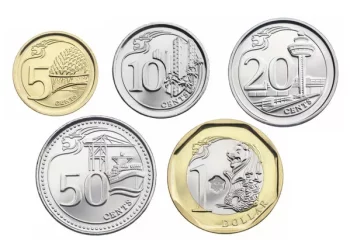Canada and the United States share one of the closest economic relationships in the world. The two nations are major trading partners, with extensive cross-border investment, shared supply chains, and interconnected industries. Despite this intimate economic relationship, Canada has maintained its own currency—the Canadian dollar (CAD)—rather than adopting the U.S. dollar (USD) as its official currency. This article delves into the reasons behind Canada’s decision to retain its currency, exploring economic, political, and social factors that influence this choice.
Historical Context
To understand why Canada continues to use the Canadian dollar, it is crucial to look at the historical context of its currency. The Canadian dollar was established in the 19th century, evolving from the Spanish dollar and the British pound. In 1867, with the Confederation, Canada adopted a decimal currency system, leading to the establishment of the CAD as a distinct entity.
In the 20th century, Canada experienced significant economic shifts, including the Great Depression, World War II, and post-war growth. These events fostered a strong sense of national identity and economic independence. Maintaining a separate currency became a symbol of Canada’s sovereignty.
Economic Independence
Monetary Policy Autonomy
One of the primary reasons Canada continues to use its currency is to retain control over its monetary policy. The Bank of Canada, established in 1935, plays a crucial role in managing the country’s monetary policy, including setting interest rates, controlling inflation, and ensuring financial stability. By using the CAD, Canada can tailor its monetary policies to its specific economic conditions.
For instance, in times of economic downturn, the Bank of Canada can lower interest rates to stimulate borrowing and investment. If Canada were to adopt the USD, it would lose this ability, as monetary policy would be dictated by the Federal Reserve in the United States. This could lead to inappropriate economic conditions for Canada, which may face different economic challenges than its southern neighbor.
Exchange Rate Management
Using its own currency also allows Canada to manage its exchange rates. The CAD floats against other currencies, allowing for adjustments based on economic conditions. A weaker CAD can make Canadian exports more competitive, helping to boost the economy during downturns. Conversely, a stronger CAD can help control inflation by making imports cheaper.
If Canada were to use the USD, it would lose this flexibility. Changes in the U.S. economy could significantly impact Canada, potentially leading to increased volatility in trade and investment.
Trade and Economic Relationships
Robust Trade with the U.S.
While Canada’s trade relationship with the U.S. is robust, it is essential to recognize that Canada also engages in trade with numerous other countries. Maintaining its currency allows Canada to navigate these diverse economic relationships without being overly reliant on the U.S. dollar.
In 2021, the U.S. accounted for approximately 75% of Canada’s exports, but Canada also has significant trade partnerships with countries in the European Union, Asia, and Latin America. By using its own currency, Canada can engage more effectively with these markets and promote the growth of a diversified economy.
Trade Agreements
Canada has entered into multiple trade agreements, including the Canada-United States-Mexico Agreement (CUSMA) and the Comprehensive and Progressive Agreement for Trans-Pacific Partnership (CPTPP). These agreements emphasize the importance of maintaining national currencies for trade facilitation and economic collaboration. A common currency could complicate trade negotiations and limit Canada’s ability to pursue its own economic interests.
Political Considerations
National Sovereignty
National sovereignty is a core principle of Canadian identity. Retaining the Canadian dollar is a significant aspect of Canada’s autonomy. The use of a foreign currency can be perceived as a loss of sovereignty, which is a sensitive issue for Canadians. The adoption of the USD could lead to increased control by U.S. economic policies and regulations, undermining Canada’s ability to make independent decisions.
Public Sentiment
Public opinion plays a crucial role in currency adoption. Surveys consistently show that a majority of Canadians prefer to keep the Canadian dollar. Many view the currency as a symbol of national pride and identity. This sentiment is deeply rooted in Canadian history and culture, making the idea of adopting the USD politically contentious.
Risks and Challenges of Dollarization
Economic Dependency
Adopting the U.S. dollar could lead to increased economic dependency on the United States. While this may seem beneficial due to the size of the U.S. economy, it could expose Canada to vulnerabilities. Economic downturns in the U.S. could have immediate and severe consequences for the Canadian economy, as seen during the 2008 financial crisis.
Loss of Competitive Advantage
Using the USD could also diminish Canada’s competitive advantage. A separate currency allows Canada to maintain unique economic conditions tailored to its industries. Dollarization could result in a one-size-fits-all approach that may not suit the Canadian economy, particularly in sectors like natural resources and technology.
Financial Instability
The financial crisis of 2008 highlighted the interconnectedness of global economies. While Canada weathered the storm better than many countries, adopting the USD could have exposed Canada to the same risks that led to the crisis in the U.S. The potential for financial instability is a significant concern when considering currency adoption.
Conclusion
Canada’s decision to retain the Canadian dollar rather than adopting the U.S. dollar is rooted in a complex interplay of historical, economic, and political factors. The ability to maintain monetary policy autonomy, manage exchange rates, and preserve national sovereignty are critical elements that underscore the importance of having a distinct currency.
While the close economic ties with the United States create pressure to consider dollarization, the risks and challenges associated with such a move highlight the value of Canada’s currency independence. As Canada navigates a changing global landscape, the Canadian dollar remains a vital symbol of national identity and economic resilience.
In the face of evolving economic dynamics, maintaining its currency allows Canada to adapt to its unique challenges while fostering growth and stability in a rapidly changing world.
Related Topics:



























